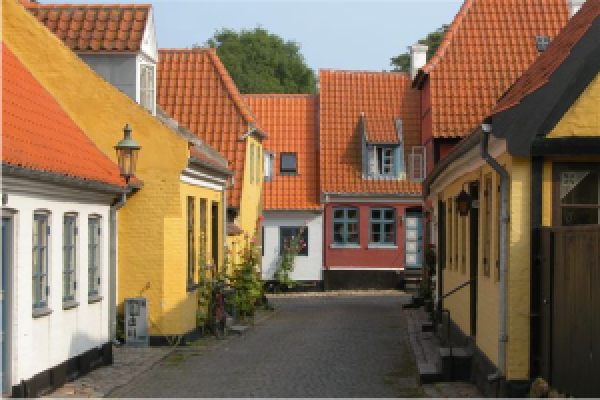
Learn Survival Danish
Wikitravel users have collectively created a free Danish phrasebook with the goal of making it possible for travelers to "get by" while traveling in areas where Danish is spoken.
Wikitravel phrasebooks are available in many languages and each one varies in depth and detail. Most of the phrasebooks include a pronunciation guide, a general phrase list, information about dates and numbers, a color list, transportation-related phrases, vocabulary for shopping and phrases for eating and drinking. Some are even more in depth, and all are free!
From Website
Danish (dansk, pronounced [danˀsɡ̊]) is a North Germanic language spoken by around six million people, principally in the country of Denmark. It is also spoken by 50,000 Germans of Danish ancestry in the northern parts of Schleswig-Holstein, Germany, where it holds the status of minority language. Danish is a mandatory subject in school in the Danish territories of the Faroe Islands (where it is also an official language) and Greenland, as well as the former crown holding of Iceland. There are also Danish language communities in Argentina, the United States and Canada.
Danish is a Scandinavian language spoken in Denmark and some areas of Greenland. It is closely related to Norwegian and Swedish, and some speakers of the three languages can understand the others. In writing, the difference between the Danish and Norwegian languages are not bigger than the difference between English and American English, though it will often be harder in oral conversations. These Scandinavian languages are North Germanic, strongly influenced by Low Saxon (German).
Danish, together with Swedish, derives from the East Norse dialect group, while the old Norwegian dialects before the influence of Danish and Bokmål is classified as a West Norse language together with Faroese and Icelandic. A more recent classification based on mutual intelligibility separates modern spoken Danish, Norwegian and Swedish into a Mainland Scandinavian group while Icelandic and Faroese are placed in a separate category labeled Insular Scandinavian.
Written Danish and Norwegian Bokmål are particularly close, though the phonology (that is, the system of relationships among the speech sounds that constitute the fundamental components of the language) and the prosody (the patterns of stress and intonation) differ somewhat. Proficient speakers of any of the three languages can understand the others, though studies have shown that speakers of Norwegian generally understand both Danish and Swedish far better than Swedes or Danes understand each other. Both Swedes and Danes also understand Norwegian better than they understand each other's languages.
The Danish and Norwegian alphabet is based upon the Latin alphabet and has consisted of the following 29 letters since 1917 (Norwegian) and 1955 (Danish), although Danish did not officially recognize the W as a separate letter until 1980:
A, B, C, D, E, F, G, H, I, J, K, L, M, N, O, P, Q, R, S, T, U, V, W, X, Y, Z, Æ, Ø, Å
The letters c, q, w, x and z are not used in the spelling of indigenous words. They are rarely used in Norwegian, where loan words routinely have their orthography adapted to the native sound system. Conversely, Danish has a greater tendency to preserve the original spelling of loan words. In particular, a 'c' that represents /s/ is almost never normalized to 's' in Danish, as would most often happen in Norwegian. Many words originally derived from Latin roots retain 'c' in their Danish spelling.
The "foreign" letters also sometimes appear in the spelling of otherwise-indigenous family names. For example, many of the Danish families that use the surname Skov (literally: "Forest") spell it Schou.
Danish is a member of the following language family:
Indo-European > Germanic > North Germanic > East Scandinavian > Danish